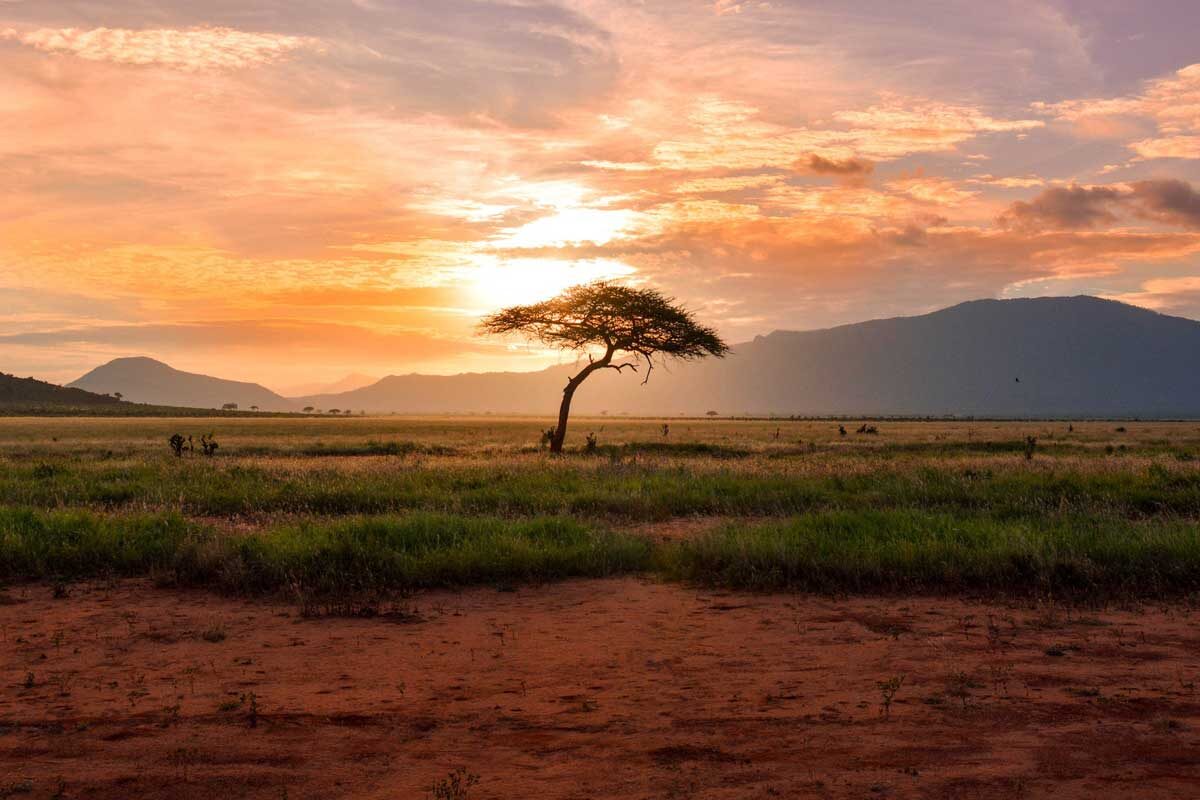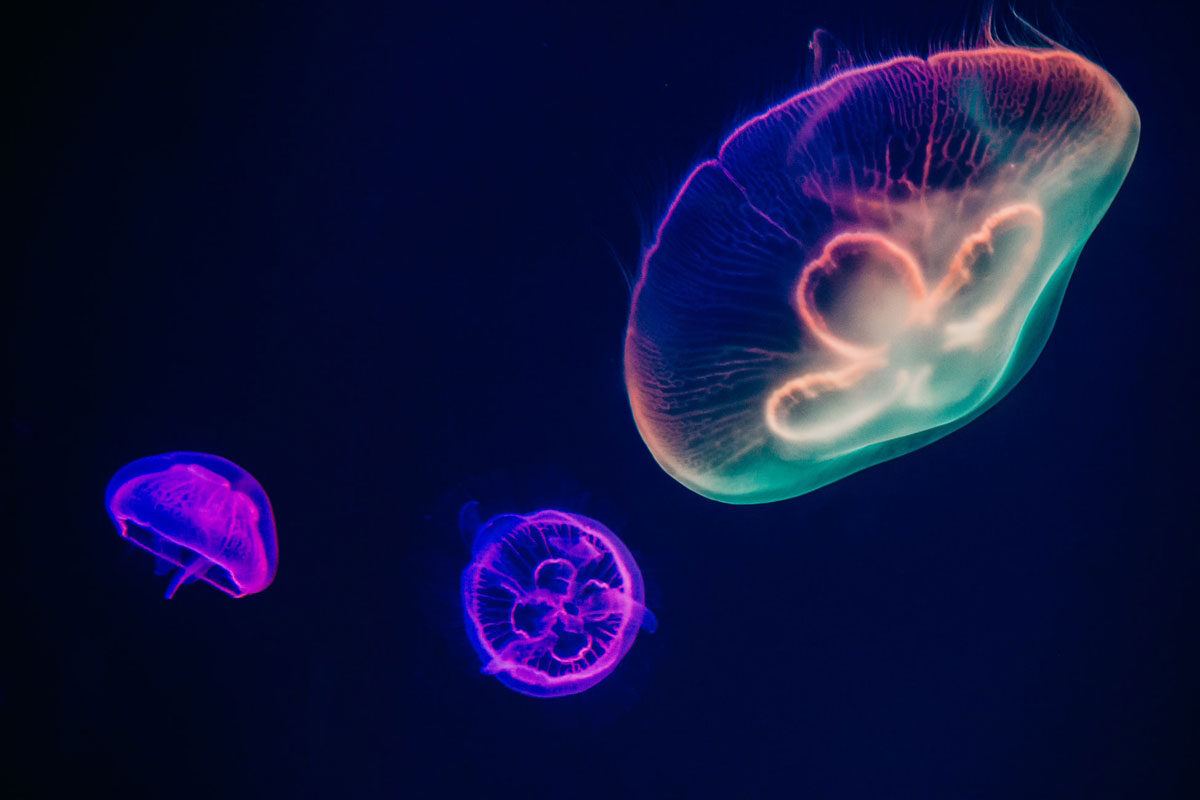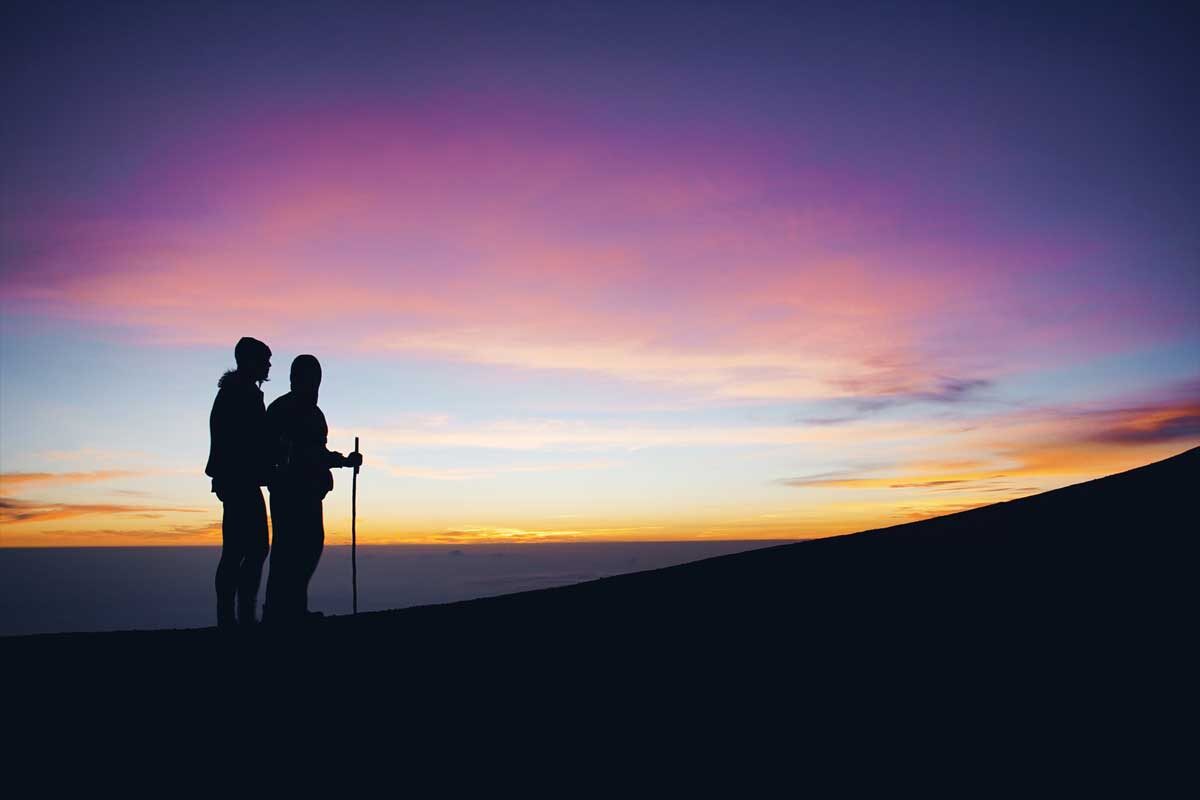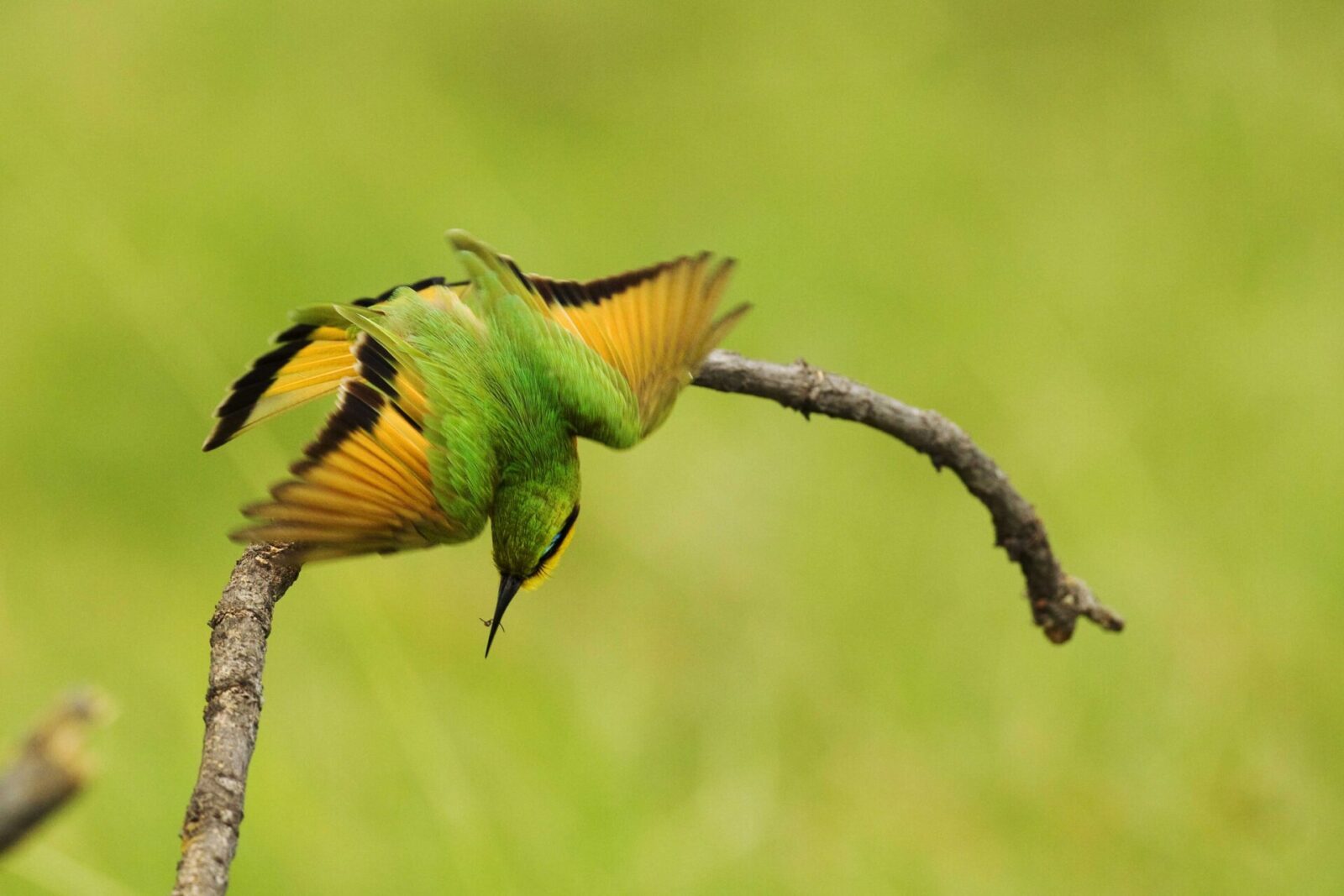
The Rare Birds and Mammals of Northern Botswana – By Tented Camp
Tour Introduction
Although not technically a dedicated birding group, birds feature very heavily in this special group departure. It is also scheduled for the wetter summer months when bird activity is at its highest and there is a huge influx of migrant bird species.
Using tented camps throughout, you will be accompanied by a naturalist guide, as well as a team of camp crew (including a chef!), who will travel along the same route as you, setting up the mobile camps prior to your arrival at each location.
The spacious tents are comfortable, with solid beds and bed linen provided, and private en suite toilet/shower areas. The quality of meals prepared, cooked and served is not akin to camping as you know it, whilst a selection of beers, wines and spirits are provided for your enjoyment. This is glamping.
The route explores the Okavango and Chobe regions of Northern Botswana, taking in the protected areas of Moremi Game Reserve, Mababe Private Reserve and Chobe National Park. You will explore the waterways of the Okavango Delta by Mokoro (a dugout canoe traditional to the area) and have the chance to see hippo, crocodile and greater kudu amongst plentiful wetland bird species. The endangered African Wild Dog is an expert hunter in the flooded plains.
You will travel north through Savuti, the temporally flooded marshland, famed for its lions that have learned how to hunt elephants. Delve into the enchanting teak woodlands of Chobe Forest Reserve and scan the expansive savannah of Chobe National Park for its iconic species. Finish your trip with a boat trip along the Chobe River to reach the riverside town of Kasane for your flight home.
Birds of prey to look out for include the African hawk-eagle, Gabar goshawk, Shikra, Little sparrowhawk, Dark chanting goshawk, Tawny eagle, Steppe eagle, African fish eagle, African harrier hawk, Bat-hawk, Cuckoo hawk, Long-crested eagle, Black sparrowhawk, Martial eagle, Bateleur, Red-necked falcon, Lanner falcon, Secretary bird, Black-shouldered kite, Lesser-spotted eagle, Wahlberg’s eagle, Steppe buzzard, Yellow-billed kite, Montague’s harrier, Dickenson’s kestrel, Amur falcon, Peregrine falcon and Lizard buzzard, White-faced owl, Eurasian hobby falcon and Ovambo sparrowhawk
Other bird species include: Red-billed, Southern yellow-billed, African grey, Bradfield’s and Southern Ground hornbills; Diederick cuckoo, Levaillant’s cuckoo, Jacobin cuckoo, Great-spotted cuckoo, African cuckoo, Common cuckoo, Shaft-tailed whydah, Pin-tailed whydah, Eastern paradise whydah, Greater honeyguide, and Lesser honeyguide.
African rail, Coppery-tailed coucal, Black coucal, Red-chested flufftail, African crake, Black crake, Corncrake, chirping cisticola, Luapula cisticola, Purple swamphen, Allen’s gallinule, African skimmer, Saddle-billed stork, Yellow-billed stork, Intermediate egret, Goliath heron, Slaty egret and Wattled crane, Malachite kingfisher, Great white pelican.
Red-headed weaver, Stierling’s wren-warbler, Scarlet-chested sunbird, Neddicky, Yellow-breasted apalis, Chin-spot batis, Quail finch, Long-legged bustard.
Rosy-throated longclaw, Greater painted snipe, Lesser jacana and Lesser moorhen.
Violet-eared waxbill, Black-cheeked waxbill, Village indigobird, Red-crested korhaan, Caspian plover Chestnut-backed sparrowlark, Grey-backed sparrowlark, Northern black korhaan, Rufous-naped lark, African pipit and Desert cisticola.
Red-winged pratincole, black-winged pratincole, racket-tailed roller, tree pipit and Miombo rock-thrush.
Please note that your exact program of activities will be determined by your guide depending on seasonal water levels, grass height, weather and recent animal sightings.
Tours are based on a minimum of 2 people with a maximum group size of 7. Transport will be in specially designed safari 4×4 with fridge and retractable canvas roof. Guaranteed window seat for each passenger.
No single supplement for the first three singles on each departure. Minimum age for children is 12 years.
Full Itinerary
Depart with your guide from Maun and head into the Moremi Game Reserve. Reach your first camp in the Xakanaxa region by the afternoon. Explore the area's diverse range of habitats, including woodlands, dry scrub, savannah, lagoons and floodplains. Your guide will take you out on morning and late afternoon game drives. Moremi Game Reserve is one of the best places in Africa to spot the endangered African wild dog.
This is a good day for raptors with African Hawk-Eagle, Gabar Goshawk, Shikra, Little Sparrowhawk, Dark Chanting Goshawk, Tawny Eagle, Lesser Spotted Eagle* and Steppe Eagle* all inhabiting the mopane and adjacent woodlands. Other birds common along this route includes most of Botswana’s hornbills including Red-billed, Southern Yellow-billed, African Grey, Bradfield’s and the Southern Ground Hornbills. A large number of brood-parasites may also be seen. Diederick Cuckoo*, Levaillant’s Cuckoo*, Jacobin Cuckoo*, Great-spotted Cuckoo*, African Cuckoo*, Common Cuckoo*, Shaft-tailed Whydah, Pin-tailed Whydah, Eastern Paradise Whydah, Greater Honeyguide, and Lesser Honeyguide.
Staying at Letaka Tented Camp Xakanaxa. Includes Dinner.
Xakanaxa exploration day with morning and afternoon game drives. The swampy areas of Xakanaxa are home to African Rail, Coppery-tailed Coucal, Black Coucal*, Red-chested Flufftail, African Crake*, Black Crake, Chirping Cisticola, Luapula Cisticola, Purple Swamphen, Allen’s Gallinule to name but a few. The open waters attract African Skimmer, Saddle-billed Stork, Yellow-billed Stork, Intermediate Egret, Goliath Heron, African Fish Eagle as well as the globally threatened Slaty Egret and Wattled Crane.
Staying at Letaka Tented Camp Xakanaxa. Includes All Meals.
Xakanaxa exploration day with morning and afternoon game drives.
Staying at Letaka Tented Camp Xakanaxa. Includes All Meals.
After breakfast, your guide will drive you north east along the Khwai River. Stop en route for a guided excursion in a mokoro. These traditional dugout boats are the best way to explore the waterways of the Okavango Delta; The lack of any engine noise meaning animals are less likely to get spooked and flee. Impressive numbers of hippo can be seen wallowing in the Khwai. Continue to your camp in Mababe.
In the mopane woodlands African Hawk-Eagle, Tawny Eagle, Gabar Goshawk, Little Sparrowhawk, African Harrier Hawk and Shikra are common raptors. Mixed bird parties move through the canopy and include Red-headed Weaver, Stierling’s Wren-Warbler, Scarlet-chested Sunbird, Neddicky, Yellow-breasted Apalis, Chin-spot Batis, Diederik Cuckoo* to name but a few. The verges of the swamp form breeding grounds for the Rosy-Longclaw, Black Coucal*, Long-legged Bustard and the African Crake*
Staying at Letaka Tented Camp Mababe. Includes All Meals.
Today head into the Mababe Private Reserve where you'll join game drives by both day and night. Some guided walking excursions may also be possible.
Truly one of Botswana birding Mecca’s. The western reaches are prime habitat for the uncommon Rosythroated Longclaw. The entire length of the river is hunting domain for the Bat-Hawk. Other interesting raptors here are Cuckoo Hawk (rare), Long-crested Eagle and Black Sparrowhawk. More commonly Tawny Eagle, Steppe Eagle*, Lesser-spotted Eagle*, Martial Eagle, Bateleur and African Hawk-Eagle. The waterways host Africa Rail, African Crake*, Greater Painted Snipe, Allen’s Gallinule*, Lesser Jacana and Lesser Moorhen*.
Staying at Letaka Tented Camp Mababe. Includes All Meals.
Mababe exploration day including game drives by both day and night. Some guided walking excursions may also be possible.
Staying at Letaka Tented Camp Mababe. Includes All Meals.
Leave your campsite in the private Mababe Reserve today, heading north into the Chobe Central area. You are very likely to see elephant if there is enough surface water around, and this more arid landscape is brilliant cheetah territory. Savuti, within Central Chobe, was once an expansive marsh. Now mostly dry, some lagoons and waterholes remain. The powerful lion pride of Savuti have famously learned to predate on elephants, under the cover of darkness.
The Mababe Depression is a birder’s paradise. The nutritious grasses that grow on the rich soils provide excellent seed for an impressive array of estrillids and viduids. Among these are the magnificently coloured Violet-eared Waxbill, Black-cheeked Waxbill, Village Indigobird, Shafttailed Whydah and Paradise Whydah. These in turn provide a good food source for small raptors such as the Little Sparrowhawk, Shikra, Gabar Goshawk, Red-necked Falcon and Lanner Falcon. It is not only the small birds that feed on the grass seeds, but rodents too. There are annual outbreaks of huge numbers of rats and mice. As a result huge numbers of Secretary Bird, Tawny Eagle, Black-shouldered Kite, Steppe Eagle*, Lesser-spotted Eagle*, Wahlberg’s Eagle* and Steppe Buzzard* can be found.
Staying at Letaka Tented Camp Central Chobe. Includes All Meals.
Central Chobe exploration day with game drives and bushmen paintings walk.
The surface water that is pumped by the Government here provides a major attraction for birdlife. In the dry season thousands of dove and sandgrouse come down to drink in the mornings and are under constant surveillance by Yellow-billed Kite*, Tawny Eagle and African Hawk-Eagle. Red-crested Korhaan are common in the Kalahari Appleleaf (Lonchocarpus nelsii) veld. The marsh is the summer home for good numbers of Caspian Plover* and Montague’s Harrier* as well as Chestnut-backed Sparrowlark, Greybacked Sparrowlark, Northern Black Korhaan, Rufous-naped Lark, African Pipit and Desert Cisticola. Dickenson’s Kestrel, Amur Falcon* and Red-necked Falcon are found along the perimeter of the marsh.
Staying at Letaka Tented Camp Central Chobe. Includes All Meals.
Central Chobe exploration day with morning and afternoon game drives.
Staying at Letaka Tented Camp Central Chobe. Includes All Meals.
After breakfast continue travelling north with your guide. You will leave your camp near Savuti in Central Chobe and head towards the Chobe River itself. The stunted mopane scrub region around Ghoha hills has natural waterholes that hold water well into the dry season, drawing in good numbers of elephant, Burchell's zebra, buffalo and greater kudu. You will stop for a scenic lunch en route and be able to enjoy the beauty of the Zambezi teak woodlands of the Chobe Forest Reserve. Roan and Sable antelope prefer these forested areas.
The most unusual species are to be found in the teak (Baikea plurijuga) woodlands. This broad-leafed woodland, or miombo as it is locally known, provides good pickings for insectivorous birds that favour canopy habitat. Grey Tit-Flycatcher, Ashy Flycatcher, Paradise Flycatcher, Pallid Flycatcher, Scarlet-chested Sunbird, Amethyst Sunbird, Yellow-throated Petronia, Red-headed Weaver and Violet-backed Starling are only some of the species that move around in the “bird parties” in the canopy. Dickenson’s Kestrel, Red-necked Falcon, Peregrine Falcon* and Lizard Buzzard are some of the raptors to keep an eye out for, while the diminutive White-faced Owl can often be seen roosting in the road-side vegetation. Flappet Lark, Fawn-coloured Lark, Dusky Lark*, Olive-Tree Warbler* and Neddicky are species more likely to be enjoyed by the birding enthusiast.
Staying at Letaka Tented Camp Chobe River. Includes All Meals.
Chobe River exploration day. Much of the Chobe’s wildlife come to drink in the latter half of the morning and early afternoon when the heat stimulates their thirst. Breeding herds of elephant are very numerous around the river, as are lion, with perhaps the highest densities of the iconic predator in Southern Africa. Spend your last night at the Chobe River camp.
Bat-Hawk, Cuckoo Hawk, Eurasian Hobby Falcon* and Ovambo Sparrowhawk are some of the more interesting raptors. Corncrake*, African Crake*, African Rail, Luapula Cisticola, Malachite Kingfisher, Quail Finch and Rosy-throated Longclaw are found on the edges of the floodplain. Large flocks of Great White Pelican investigate the drying pools as the floodwaters recede. Much larger flocks of the nomadic Red-winged Pratincole and also Black-winged Pratincole, numbering in their thousands, can be found on the drying floodplains. The woodlands support Racket-tailed Roller, Stierlings Wren-Warbler, Tree Pipit* and Miombo Rock-Thrush.
Staying at Letaka Tented Camp Chobe River. Includes All Meals.
After an early start, you will enjoy an early morning cruise on the Chobe River. You will then be dropped off at Kasane Airport. After saying goodbye to your guide, catch your onward flight.
Includes Breakfast.
Tour Accommodation
Overview
A mobile safari tour is an intrepid and unique way of experiencing Africa’s remaining wilderness regions. Venturing further off the increasingly beaten bush trails of Southern Africa is likely to reward you with extraordinary wildlife viewing. Within Botswana, Letaka Safaris are experts in this type of tour. Their access to private reserves and remote campsites, exceptional staff, and superb regional knowledge, provides them with a cutting edge.
A team of guides and crew will join you and your travel companions, setting up the mobile camp at each location along your itinerary route. The safari chef and camp assistants will ensure you are well supplied with excellent meals, which are eaten in a communal setting with your companions. Drinking water, soft drinks and a selection of alcoholic beverages are all included in your stay. Mobile showers are even available within your private ensuite area, adjacent to your tent.
Their modern fleet of open-sided, four-wheel drive vehicles ensure excellent wildlife viewing potential in comfort, whilst the guides are highly professional and experienced.
Swimming Pool
Air Conditioning
Rooms
Facilities
The tents are a 4 x 3m Sahara style with a high roof, 2 x 3m ensuite bathroom and a 2 x 3m covered (open-sided) private porch area.
Solid base camp beds made up with mattresses, sheets, duvets and pillows. Ensuite areas consist of a long drop toilet and a bucket shower. Showers can be ordered as hot, cold or warm. *The guide withholds the right to limit water use and showering depending upon the availability of water. Towels and basic toiletries provided.
Tents have an oil/paraffin lamp on the veranda and in the bathroom and within the tent itself, a LED rechargeable camp light is supplied.
Local Wildlife
Depending on the region and campsite location, certain species may be more prevalent and easier to spot than others. In the Kalahari, Okavango and Chobe regions however, you could possibly see: Lion (including black-maned), cheetah, leopard, brown hyena, spotted hyena, wild dog, aardwolf, caracal, honey badger, elephant, giraffe, zebra, greater kudu, impala, gemsbok, steenbok, springbok, oryx and eland. Hundreds of bird species including good numbers of raptors and ostrich are present.
Optional Activities
Game drives, bushmen guided walks, mokoro (traditional dugout canoe) excursions.
Route Map
Departure Dates
Tour Dates
Adult Price
Single Supp
Travel Information
Are International Flights Included?
No. Please contact us for a quote if required.
Best Visited:
November to March
Are you ATOL Registered?
Yes. This means we are legally able to book your international flights in conjunction with your ground arrangements so you can book with us with complete confidence. Read more about our ATOL license here.
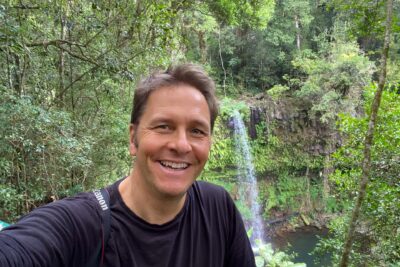
Jonathan Morris
Area Specialist
Don’t forget to bring a decent pair of binoculars!
For families travelling with younger children on private trips; a family safari tent is available, ensuring the children’s safety and the parent’s peace of mind. The family tent is a two-bedroom unit with an adjoining bathroom and lockable exit/entrance with each tent taking 2 people in each.
If you have any questions regarding this Tour, please feel free to contact me on +44 (0)1803 866965
Our best safari to date – exhilarating, luxurious, unforgettable.
We’re seasoned wildlife travellers, and the Letaka tented safari in Botswana exceeded all expectations. The experience offered exceptional access to nature, with wildlife roaming freely and unphased through camp – lions, wild dogs, honey badgers, and hyenas all made memorable appearances. Slightly scary, but utterly exhilarating.
Our guide was outstanding – deeply knowledgeable about wildlife, birds, plants, and geology, with expert tracking skills that consistently led us to the best sightings. They positioned the vehicle perfectly for photography, respected the animals’ space, and made us feel safe and cared for throughout. The camp staff were a formidable team, attentive and respectful, with thoughtful touches like hot water bottles in bed and inventive meals despite the challenges of cooking in the bush. The tented setup was surprisingly luxurious and deeply comfortable.
Game viewing was phenomenal: wild dogs, lions, cheetahs, leopards, bat-eared foxes, elephants, giraffes, zebras, and a spectacular murmuration of queleas at sunset. We even explored the majestic Baobab trees in Mababe reserve – an unforgettable moment. Thank you to the entire team for a truly exceptional safari. We’re already planning our next trip.
